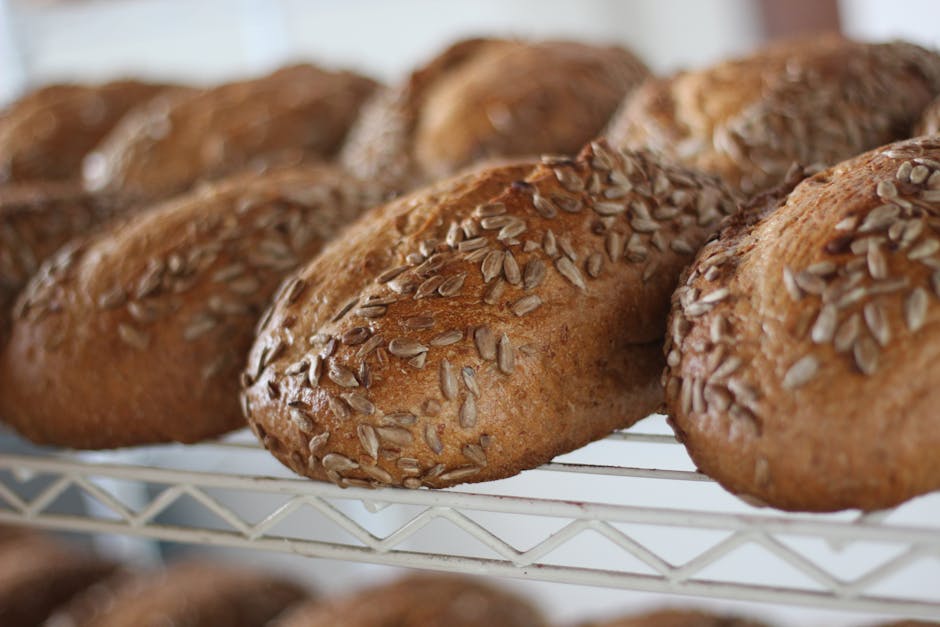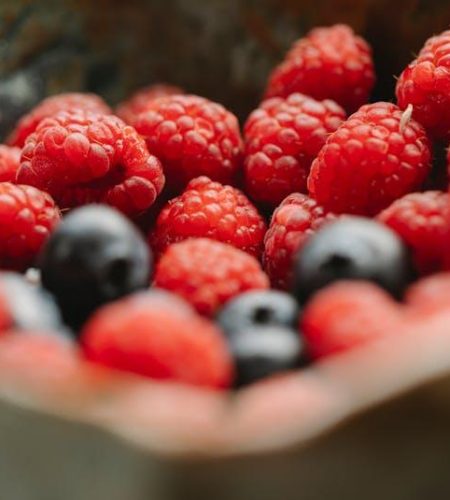In the world of pizza, one ingredient reigns supreme, quietly shaping the taste and texture of every bite. No, it’s not the gooey cheese or the tangy tomato sauce – it’s the magical microorganism known as yeast. Yes, that’s right, the unsung hero of Neapolitan pizza is finally getting its moment in the spotlight. Join us on a journey as we uncover the mysterious and oh-so-important influence of yeast on everyone’s favorite cheesy, doughy delight. Prepare to be amazed, amused, and maybe even a little hungry – after all, who can resist the allure of a perfectly risen crust? Let’s dive into the delicious world of Neapolitan pizza and discover the power of yeast, one slice at a time.
Contents
The Role of Yeast in Neapolitan Pizza Dough
Yeast is the magic ingredient that gives Neapolitan pizza dough its light, airy texture. Without these tiny microorganisms, our beloved pizza would be as flat as a pancake. But what exactly do these microscopic creatures do to transform a lump of dough into a pillowy, chewy base for all of our favorite toppings?
When yeast is added to the dough, it feasts on the sugars in the flour and releases carbon dioxide gas and alcohol as byproducts. This gas gets trapped in the dough, creating those coveted bubbles that make your pizza crust rise and crisp up in the oven. And who knew that the alcohol produced during fermentation is responsible for that slight tangy flavor in the dough? Pizza dough: the original party animal.
But yeast isn’t the only one pulling its weight in the dough-making process. The gluten in the flour plays a crucial role in developing the structure of the dough and giving it that signature chewiness. Together, yeast and gluten work in perfect harmony to create the perfect canvas for all of our pizza dreams.
So next time you take a bite of a delicious Neapolitan pizza, remember to give a silent thank you to the unsung hero of the dough: yeast. Without these little guys doing their thing, we’d all be stuck eating cardboard-like crusts. Cheers to yeast, the unsung hero of the pizza world!

Fermentation Process in Neapolitan Pizza Making
So you want to know the secret behind the perfect Neapolitan pizza? Well, look no further than the magical fermentation process! This crucial step is what gives Neapolitan pizza its signature taste and texture. Let’s take a closer look at how this sorcery works.
First off, we start with a simple mixture of flour, water, salt, and yeast. This humble dough then goes through a transformation like no other, thanks to the fermentation process. The yeast works its magic, feasting on sugars in the dough and releasing carbon dioxide gas, which creates those coveted air bubbles in the crust.
During fermentation, the dough is left to rest and rise for hours on end. This slow and steady process allows for the development of complex flavors and a light, airy texture. It’s like the dough is taking a luxurious spa day, getting pampered and transformed into pizza perfection.
So next time you sink your teeth into a delicious slice of Neapolitan pizza, remember to thank the fermentation process for its role in creating that heavenly flavor and delightful chewiness. It truly is the unsung hero of the pizza-making world!

Impact of Yeast on Dough Texture and Flavor Development
Yeast, the magical ingredient that turns a bland lump of dough into a fluffy, flavorful masterpiece. Its impact on dough texture and flavor development is truly remarkable.
When yeast gets to work in a ball of dough, it creates tiny pockets of gas that cause the dough to rise. This gives bread its light and airy texture, perfect for making sandwiches or juggling (though we recommend the former).
But yeast isn’t just about making dough rise. It also adds a depth of flavor that can’t be achieved through any other means. From the slight tanginess of sourdough to the sweet aroma of fresh brioche, yeast is the unsung hero of the baking world.
So next time you’re kneading dough, give a little shout-out to the yeast. It may be tiny, but its impact on dough texture and flavor development is truly larger than life. And who knows, maybe it’ll rise to the occasion and thank you with a perfectly baked loaf of bread.

Yeast Strains Used in Traditional Neapolitan Pizza
When it comes to making the perfect Neapolitan pizza, the type of yeast used can make all the difference. Neapolitan pizza traditionally uses natural yeast, which gives the dough its signature flavor and texture. Here are some of the most popular :
- Saccharomyces cerevisiae: This strain of yeast is commonly used in Neapolitan pizza dough for its ability to ferment quickly and produce a light, airy crust. It’s known for its distinct flavor profile, which adds a tangy note to the dough.
- Sourdough starter: While not technically a yeast strain, sourdough starter is often used in Neapolitan pizza dough for its natural leavening properties. It imparts a subtle sour flavor to the crust, giving it a unique taste that pairs perfectly with the rich tomato sauce and creamy mozzarella.
- Saccharomyces exiguus: This strain of yeast is known for its ability to ferment at lower temperatures, which is ideal for Neapolitan pizza dough that is typically cold fermented. It produces a delicate, slightly tangy crust that crisps up beautifully in a wood-fired oven.
Whether you prefer a light and airy crust or a tangy sourdough flavor, the yeast strain used in your Neapolitan pizza dough can make all the difference. Experiment with different strains to find the perfect combination of flavor and texture for your own homemade pizza masterpiece!

Influence of Yeast on Crust Crispiness and Oven Spring
Have you ever pondered the mysterious ways in which yeast affects the crust of your delicious baked goods? Let’s delve deep into the world of crust crispiness and oven spring, and uncover the fascinating influence of yeast on these crucial baking factors.
When yeast meets flour, water, and a sprinkle of magic (okay, maybe just a pinch of sugar), a miraculous transformation takes place. This humble microorganism begins to feast on sugar, releasing carbon dioxide bubbles that expand and leaven the dough. As the dough rises, the yeast’s antics create the coveted oven spring - that magical moment when your bread dough puffs up and grows in the oven like a proud souffle.
But wait, there’s more! The yeast doesn’t just stop at creating oven spring; it also plays a pivotal role in determining the crust crispiness of your baked goods. As the yeast ferments and produces enzymes, these little helpers break down starches and proteins in the dough, creating a web of gluten that gives structure to your creations. The result? A crust that is oh-so-crispy on the outside, with a tender and airy crumb on the inside.
So next time you sink your teeth into a perfectly baked loaf of bread or a golden-brown pizza crust, take a moment to thank the hardworking yeast that made it all possible. After all, without yeast, we’d be stuck with flatbreads and sad, spongy loaves. Raise a toast to the unsung hero of the baking world – the humble yeast!
Balancing Yeast Activity for Optimal Pizza Production
When it comes to making the perfect pizza, getting the yeast just right is crucial. Too much yeast and your dough will rise too quickly, leaving you with a flimsy, unappetizing crust. Too little yeast and your dough will be dense and tough, more like a hockey puck than a delicious slice of pizza. So how do you strike that perfect balance? Here are some tips:
- Temperature Control: Yeast is a living organism, and it thrives in warm, cozy environments. Keep your dough in a warm place to encourage yeast activity, but not too warm or you’ll kill the little guys.
- Time Management: Letting your dough rise for too long can lead to over-fermentation, resulting in a sour taste. On the other hand, not giving it enough time to rise will leave you with a dense crust.
- Ingredients: Use high-quality flour and fresh yeast to ensure a strong, active starter. Don’t skimp on these basic ingredients – your taste buds will thank you.
By following these tips, you’ll be well on your way to mastering the art of pizza dough. Practice makes perfect, so don’t be discouraged if your first few attempts aren’t quite up to par. With a little patience and a lot of flour, you’ll soon be churning out perfectly balanced, delicious pizzas like a pro.
FAQs
What role does yeast play in Neapolitan pizza?
Yeast is basically the Beyoncé of the Neapolitan pizza world - it’s the star of the show. This tiny microorganism is responsible for making the dough rise and giving it that airy, chewy texture we all know and love.
How does the type of yeast used affect the flavor of Neapolitan pizza?
Think of yeast as the DJ at a party – different types can spin different tracks. Depending on whether you use active dry yeast, instant yeast, or wild yeast (aka sourdough starter), your pizza can have subtle variations in flavor and texture.
Can the fermentation process with yeast impact the digestibility of Neapolitan pizza?
Absolutely! The longer the dough ferments, the easier it is for our bodies to break down those complex carbs. So not only is yeast responsible for that beautiful rise in the dough, but it’s also looking out for our digestive systems. Thanks, yeast!
What are some tips for working with yeast when making Neapolitan pizza at home?
Yeast can be a bit of a diva sometimes, so make sure to treat it right. Use lukewarm water when activating your yeast, give it a cozy spot to proof, and always measure accurately. And remember, patience is key – good things come to those who wait (for their dough to rise).
—
And there you have it!
Next time you bite into a delicious slice of Neapolitan pizza, remember to thank the unsung hero – yeast! Let’s give credit where credit is due, for without yeast, our beloved pizza would not have that perfect crust we all crave. So here’s to yeast, the real MVP of the Neapolitan pizza world!
Now go forth and enjoy your pizza, knowing that you have a newfound appreciation for the power of yeast. And who knows, maybe your next pizza party will turn into a yeast appreciation party!
Until next time, happy eating!




